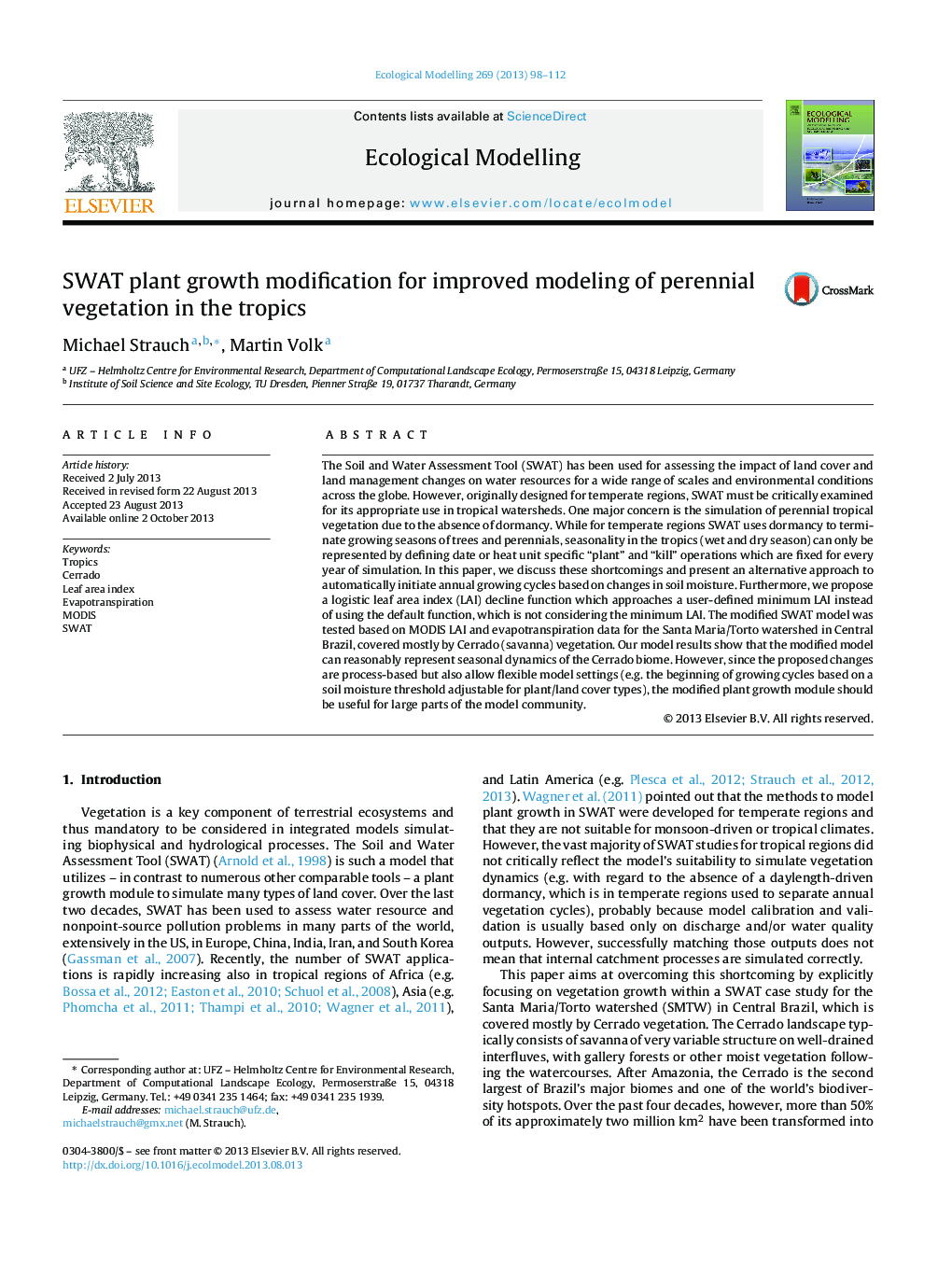| Article ID | Journal | Published Year | Pages | File Type |
|---|---|---|---|---|
| 4376047 | Ecological Modelling | 2013 | 15 Pages |
•The SWAT plant growth module was adapted for improved simulations in Central Brazil.•Simulated soil moisture is used to provoke new growing cycles.•Logistic decline rate for LAI is used to consider specific minimum LAI values.•Simulated LAI and ET were successfully proven based on MODIS reference data.•Implemented new model parameters allow application in other tropical regions.
The Soil and Water Assessment Tool (SWAT) has been used for assessing the impact of land cover and land management changes on water resources for a wide range of scales and environmental conditions across the globe. However, originally designed for temperate regions, SWAT must be critically examined for its appropriate use in tropical watersheds. One major concern is the simulation of perennial tropical vegetation due to the absence of dormancy. While for temperate regions SWAT uses dormancy to terminate growing seasons of trees and perennials, seasonality in the tropics (wet and dry season) can only be represented by defining date or heat unit specific “plant” and “kill” operations which are fixed for every year of simulation. In this paper, we discuss these shortcomings and present an alternative approach to automatically initiate annual growing cycles based on changes in soil moisture. Furthermore, we propose a logistic leaf area index (LAI) decline function which approaches a user-defined minimum LAI instead of using the default function, which is not considering the minimum LAI. The modified SWAT model was tested based on MODIS LAI and evapotranspiration data for the Santa Maria/Torto watershed in Central Brazil, covered mostly by Cerrado (savanna) vegetation. Our model results show that the modified model can reasonably represent seasonal dynamics of the Cerrado biome. However, since the proposed changes are process-based but also allow flexible model settings (e.g. the beginning of growing cycles based on a soil moisture threshold adjustable for plant/land cover types), the modified plant growth module should be useful for large parts of the model community.
